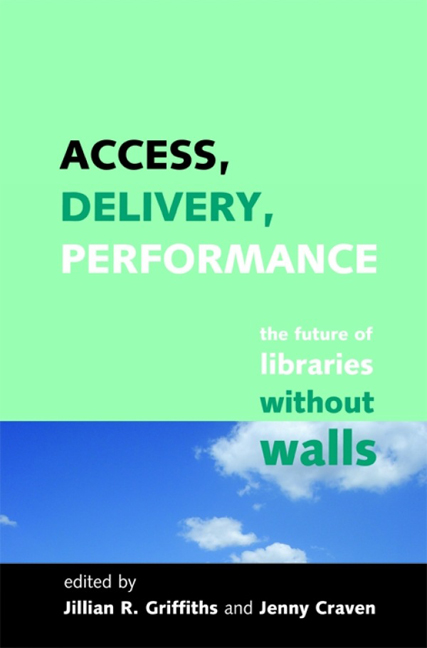Book contents
- Frontmatter
- Contents
- Contributors
- 1 Introduction
- 2 The Library Research Unit at the University of Lancaster, 1967–1972: a memoir
- Theme 1 Libraries, learning and distance learning
- Theme 2 Widening access to information
- 5 Library services for visually impaired people: a UK perspective
- 6 Public libraries, an enduring freedom: widening access to learning, information and culture
- 7 Sceptic 2.0? Social networking technologies in public libraries
- Theme 3 Changing directions of information delivery
- Theme 4 Performance, quality and leadership
- Peter Brophy: a selected bibliography
- Index
7 - Sceptic 2.0? Social networking technologies in public libraries
from Theme 2 - Widening access to information
Published online by Cambridge University Press: 08 June 2018
- Frontmatter
- Contents
- Contributors
- 1 Introduction
- 2 The Library Research Unit at the University of Lancaster, 1967–1972: a memoir
- Theme 1 Libraries, learning and distance learning
- Theme 2 Widening access to information
- 5 Library services for visually impaired people: a UK perspective
- 6 Public libraries, an enduring freedom: widening access to learning, information and culture
- 7 Sceptic 2.0? Social networking technologies in public libraries
- Theme 3 Changing directions of information delivery
- Theme 4 Performance, quality and leadership
- Peter Brophy: a selected bibliography
- Index
Summary
Introduction (and disclaimer)
Let me start with a story. It seems an appropriate place to start: it is one of the things public libraries do best: Baby Rhyme Time, Storytime for Under 5s, Book Groups, Bibliotherapy etc. Earlier this year I attended an author reading event at a small library in West Sussex. There were about 20 people there, and we listened to a local author who writes crime fiction. She talked, read an extract from her book, answered questions, signed copies and chatted amicably with locals. I have no intention of reading one of her books, but I thoroughly enjoyed myself, and, browsing the display afterwards, came home with a book (which I subsequently read with pleasure) by a different crime writer whom I'd been meaning to read for ages but not quite got round to it. This was a thoroughly, and typically, Library 1.0 experience. However, it struck me that evening that here was a library doing what it does best: serving a local community, making best use of the physical space, using all the library resources (it was a multimedia event; the audience were helped to vote online for this author in a national competition after the reading) and engaging with its users in a thoroughly interactive and meaningful way.
I would like to establish here and now my anti-Luddite credentials. Not only do I have a Facebook profile, I can be found on Linked-In, and I appear on YouTube (see link from February post to the blog InformationMatters at www.informationmatters.net). I also spent two happy years at the Centre for Research in Library and Information Management (CERLIM) researching into the value and impact of ICT in public libraries, collecting evidence to support the case for implementation of what became the People's Network (Eve and Brophy, 2000).
Why is that relevant? It will serve, I hope, to set the discussion below firmly in the context of a reflective and appropriate use of and engagement with technologies, rather than to accept a prevailing ‘if it's got 2.0 on the end it must be good’ dash to blog, twitter and MySpace our energies away, with no evidence to prove that these activities are actually providing a useful service.
- Type
- Chapter
- Information
- Access, Delivery, PerformanceThe Future of Libraries Without Walls, pp. 95 - 110Publisher: FacetPrint publication year: 2008

